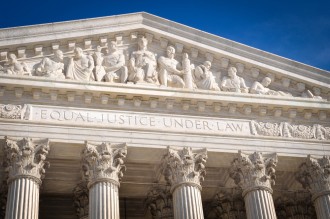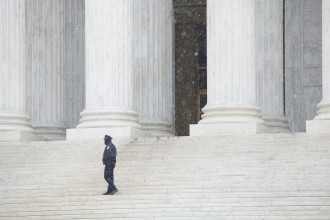
May 1, 2017
A Sale Is Still a Sale under the AIA
At least so far, the meaning of “on sale” under AIA 35 U.S.C. §102(a)(1) 1 has not changed from pre-AIA 35 U.S.C. §102(b) following a decision by the Federal Circuit in Helsinn Healthcare S.A. v. Teva Pharmaceuticals USA, Inc., Nos. 2016-1284 and 2016-1787 (Fed. Cir. May 1, 2017). The Federal Circuit held that in enacting the AIA, “Congress did not change the meaning of the on-sale bar or disturb settled law.” 2
The patentee, Helsinn, argued that the change in language in the AIA from the predecessor statute (pre-AIA 35 U.S.C. §102(b)) imparted a new requirement that a sale of an invention must be disclosing. According to Helsinn’s interpretation, the public disclosure must include details of the invention to be “on sale” under AIA §102(a)(1); otherwise, the on-sale bar does not apply. Helsinn’s argument revolved around ambiguity in §102(a)(1) introducing the “otherwise available to the public” language to the statute. Helsinn argued that this requires a statutory interpretation that “otherwise available to the public” modifies “on sale,” and was not merely introducing a new catchall category of prior art. Some have used this statutory interpretation to suggest that the on-sale bar is not triggered by secret commercialization, such as secret sales, that are not available to the public. On this rationale, the United States Patent and Trademark Office (USTPO) adopted the interpretation that the AIA §102(a)(1) does not cover secret (non-public) sales or offers for sale. 3
Here, Helsinn had a suite of pre-AIA and post-AIA patents subject to abbreviated new drug application (ANDA) patent infringement litigation related to its ALOXI® (palonosetron HCl) injectable pharmaceutical compositions for reducing chemotherapy-induced nausea and vomiting.
Well over a year before the priority patent application was filed, Helsinn entered into several agreements with a distributor, including a Supply and Purchase Agreement specifying details about the product, requirements, price, method of payment, and method of delivery. The Federal Circuit found that this agreement bore the hallmarks of a commercial sale. A partially redacted version of the agreement was publicly disclosed in SEC filings and in a press release over a year prior to the earliest priority date of the patent applications. However, the publicly disclosed version redacted the dosage amounts and some other details, like pricing. Thus, Helsinn argued that by withholding details of the invention (i.e., dosage), it avoided a public disclosure under the statute and therefore did not trigger the on-sale bar.
The Federal Circuit rejected Helsinn’s argument, stating:
“[A]n invention is made available to the public when there is a commercial offer or contract to sell a product embodying the invention and that sale is made public. Our cases explicitly rejected a requirement that details of the invention be disclosed in the terms of sale.” 4
Under the AIA, an offer to sell or sale that is made public triggers the on-sale bar as it would under pre-AIA case law, regardless of whether the specific details of the invention are made public. To this end, “the AIA did not change the statutory meaning of ‘on sale.’” 5 For example, the two-step framework in Pfaff v. Wells Electronic, 525 U.S. 55 (1998) still applies to determine whether an invention was ready for patenting when a sale or offer for sale was made that could trigger the on-sale bar. 6
Here, the pharmaceutical composition was found to be ready for patenting and offered for sale in a publicly disclosed transaction over one year before the earliest filing date of the priority application. Therefore all of the patents were invalid, whether under pre-AIA §102(b) or the AIA §102(a)(1).
The Federal Circuit was careful to limit the holdings of this case to publicly disclosed sales and offers for sale, declining to extend the holding beyond the facts presented. Thus, despite an invitation to do so, the court declined to decide the impact of the AIA language on pre-AIA case law regarding secret commercialization or sales. Under pre-AIA case law, secret commercialization and sales without public disclosure could trigger the on-sale bar. As noted above, the statutory interpretation that secret commercialization does not trigger the on-sale bar relies on interpreting “otherwise available to the public” as modifying “on sale.” While the Helsinn holding did not extend to secret sales, it would appear that under the reasoning in this decision, the statutory interpretation that a sale must be public to trigger the on-sale bar under the AIA is now on shaky ground. Thus, the Helsinn holding may require the USPTO to revisit its interpretation of AIA §102(a)(1).
Another unresolved question pertains to whether the grace period exceptions under §102(b)(1) 7 apply to sales activity. §102(b)(1) indicates that a disclosure made one year or less before the effective filing date of the claimed invention is not prior art under certain conditions. The AIA does not define “disclosure” and it is unclear whether the term encompasses sales activity, especially if sales are covert. The USPTO has taken the position that the activities listed under §102(a)(1), including sales or offers for sale, fall under the term disclosure and are thus exempted under §102(b)(1) from being prior art 8 — but the courts may not agree. Additionally, this decision raises a question about the extent to which a public disclosure of sales activity without details about the invention can serve as prior art against third parties.
We will continue to track this case for possible en banc review or certiorari to the U.S. Supreme Court and closely monitor upcoming cases involving sales activity of an AIA patent to further resolve these open questions and clarify the interpretation of AIA §§102(a)(1) and 102(b)(1).
Notes
[1] AIA 35 U.S.C. 102(a)(1) provides “NOVELTY; PRIOR ART.—A person shall be entitled to a patent unless—(1) the claimed invention was patented, described in a printed publication, or in public use, on sale, or otherwise available to the public before the effective filing date of the claimed invention.” Id. (emphasis added).
[2] Helsinn v. Teva, Nos. 2016-1284 and 2016-1787, slip. op. at 19 (Fed. Cir. May 1, 2017).
[3] See, e.g., MPEP §2152.02(d).
[4] Emphases added. Helsinn v. Teva, Nos. 2016-1284 and 2016-1787, slip. op. at 23 (Fed. Cir. May 1, 2017)
[5] Helsinn v. Teva, Nos. 2016-1284 and 2016-1787, slip. op. at 19 (Fed. Cir. May 1, 2017)
[6] Under Pfaff, application of the on-sale bar requires: that (1) the product must be the subject of a commercial offer for sale; and (2) the invention must be ready for patenting.
[7] §102(b)(1): DISCLOSURES MADE 1 YEAR OR LESS BEFORE THE EFFECTIVE FILING DATE OF THE CLAIMED INVENTION.—A disclosure made 1 year or less before the effective filing date of a claimed invention shall not be prior art to the claimed invention under subsection (a)(1) if—
(A) the disclosure was made by the inventor or joint inventor or by another who obtained the subject matter disclosed directly or indirectly from the inventor or a joint inventor; or
(B) the subject matter disclosed had, before such disclosure, been publicly disclosed by the inventor or a joint inventor or another who obtained the subject matter disclosed directly or indirectly from the inventor or a joint inventor.
[8] MPEP §2152.04.




































